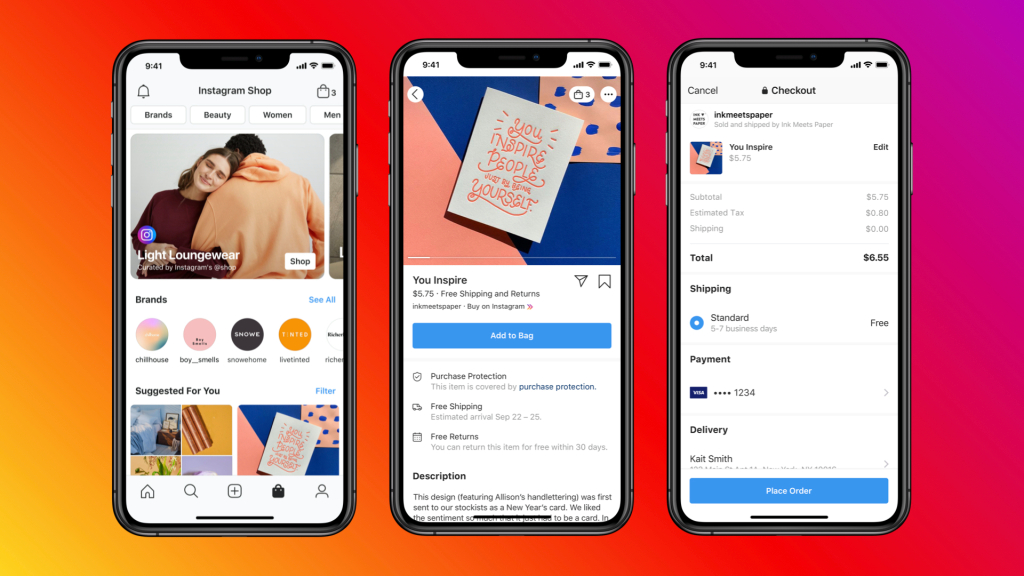Social commerce is big business.
How big?
Well, between 2021 and 2028, the global market is expected to grow by 28% a year to almost $3.4 trillion.
To put that in context, by 2028, the B2C e-commerce market is projected to hit $7.6 trillion. In other words, social commerce could account for almost half of all B2C e-commerce by then.
We were surprised by those numbers, but maybe we shouldn’t have been.
After all, social media – a key driver of social commerce – is used by more than half the world’s population, rising to three-quarters or more in markets like Northern and Western Europe, and North America.
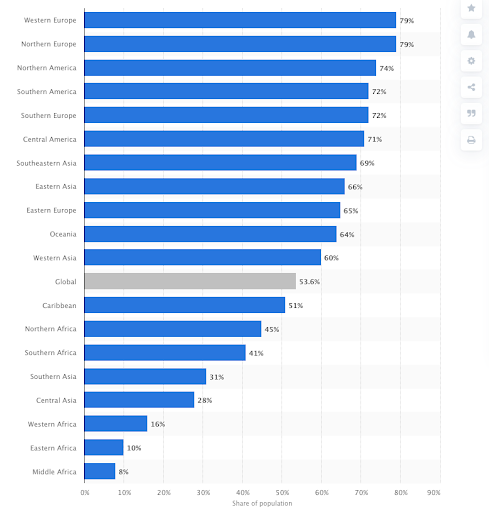
In the US, more than a third of internet users aged between 18 and 34 have already bought something via social media, so the appetite clearly exists. And we’re not just talking about tiny purchases here, with the average value of online orders referred through social media standing at a shade over $79.
Simply put, all of this means social commerce is already too big to ignore – and it’s only going to get bigger!
What Do We Mean By Social Commerce?
Before we plow on any further, let’s get some definitions straight.
“Social commerce” isn’t only about seeing a product on social, clicking a link through to a landing page, then buying it on the brand’s website. It’s not just regular e-commerce that starts with a social ad.
Rather it encompasses the whole buying process – everything from product discovery, to research, to adding-to-kart, and paying – happening directly via social media.
For instance, you might notice a new pair of sneakers, or a dress, or a pair of sunglasses in your Instagram feed, then click the “shop now” CTA, and purchase within the app.
Only a relatively small number of social platforms currently allow for true social commerce, as described above. These include Facebook, Instagram, and Pinterest, but expect many more to follow suit.
Need a little more convincing about the viability of social commerce? Or perhaps you love the sound of it, but want to see it in action?
Either way, here are 10 real-world examples that demonstrate the vast potential of social commerce.
Social Commerce Case Studies to Get Your Creative Juices Flowing
1. Nike Pre-Releases Air Jordan III on Snapchat
In one of the earliest high-profile examples of social commerce, Nike teamed up with Shopify, Darkstore, and Snap Inc (the people behind Snapchat) for the pre-release of the Air Jordan III “Tinker”.
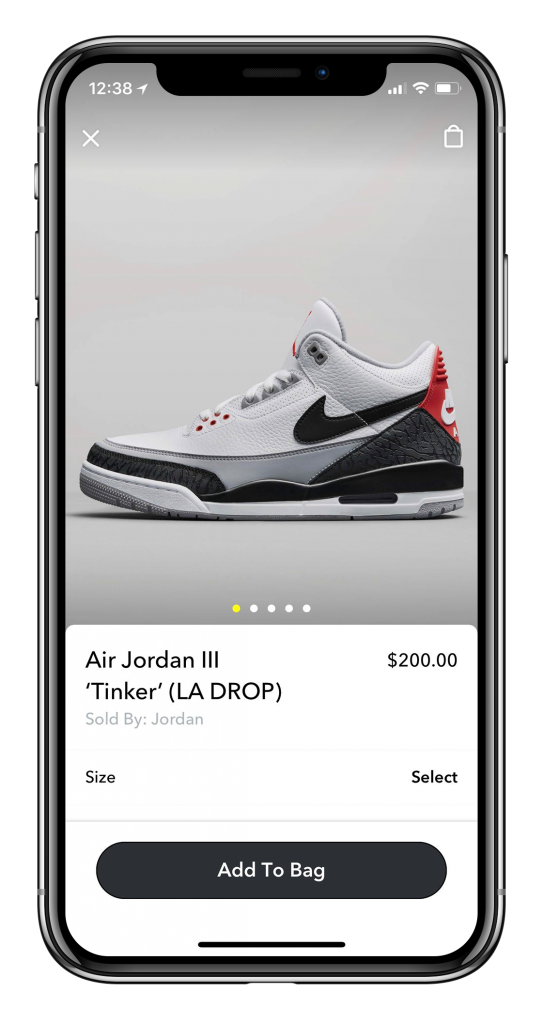 (Image Source: TechCrunch)
(Image Source: TechCrunch)
This wasn’t just another sneaker launch. Instead, the pre-release was timed to coincide with the 2018 NBA All-Star game. Thousands of people who attended the post-game Jumpman afterparty were able to scan exclusive Snap codes to buy the Air Jordan III within the app; those who ordered received their pair by 10:30 pm that same night.
The event marked the first time anyone other than Snap Inc itself had sold a product via Snapchat, making it a real game-changer in social commerce terms.
Importantly, this wasn’t just a gimmicky launch – it delivered real results, with every available pair of Air Jordan IIIs selling out in just 23 minutes.
2. Patron Sets World First With Instagram Direct Ordering
In another social commerce “first”, in 2019 tequila brand Patron became the first liquor brand to enable direct ordering via Instagram.
Patron promoted the partnership through a series of Instagram Story ads, focusing on everything from educating its audience on the brand’s story, to describing the experience of drinking Patron tequila.
Users were instructed to swipe up on these ads to place orders via the Drizly, Instacart, and Reserve Bar platforms. Instagram’s in-app checkout feature then required buyers to enter their age, which would be confirmed on delivery by scanning their ID.
3. Zimba Boosts Average Order Value With Facebook Shops
Teeth-whitening brand Zimba was among the earliest adopters of Facebook Shops, eager to assess whether the social commerce platform would help it drive sales.
As it turns out, it did a lot more than that.
Firstly, Zimba saw 1,200 incremental product orders via Shops. But beyond this, the average order value from Shops buyers was 6.7% higher than for those who ordered through the brand’s website.
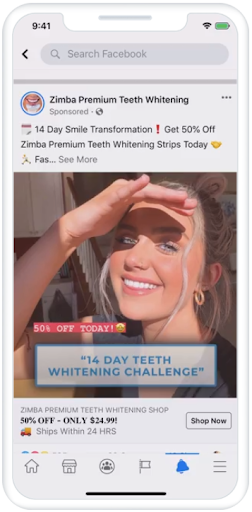 (Source: Facebook)
(Source: Facebook)
“Shops very quickly represented over 5% of our daily orders once we activated,” explains Joseph Trebitz, Zimba’s CMO. “By sometime [in 2021], we’re expecting Shops to be capable of driving as much business as our website, allowing us to scale our business and plan for aggressive hiring.”
4. David Yurman Drives Direct Sales With #TapToShop
David Yurman is a high-end jewelry designer whose products have been worn by big names like Catherine Zeta-Jones and Zosia Mamet.
While the brand has some high-profile clients, it clearly still recognizes the value of reaching out to potential customers via social media.
Many of its Instagram posts incorporate the hashtag #TapToShop, signaling that featured products can be bought directly within the app.
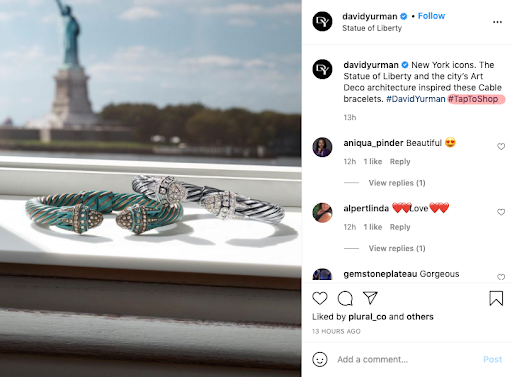 (Source: Instagram)
(Source: Instagram)
5. Joe’s Jeans Builds Pre-Launch Hype With Instagram Reminders
Joe’s Jeans was one of the first brands to demonstrate how Instagram’s social commerce functionality, Checkout, can be combined with the platform’s drop reminder feature to build excitement ahead of a new campaign.
For its linkup with fashion influencer Danielle Bernstein, the denim brand ran previews of its new product line. Users who saw the sneak-peek content were encouraged to opt-in for release reminders via Instagram Story stickers and in-feed launch tags.
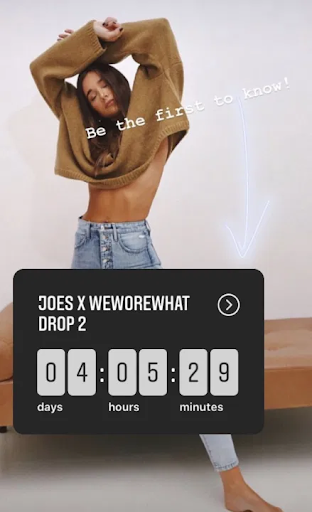 (Source: Glossy)
(Source: Glossy)
Those who signed up received notifications 15 minutes before the launch, ensuring they’d be poised to buy before the range sold out.
“Letting people shop where they already view the product was an obvious decision,” says Jennifer Stender Hawkins, SVP of marketing and innovation at Joe’s Jeans. “The easier we can make it for consumers to shop, the better.”
6. SoulCycle Melds Creative With Commerce
Another brand to make use of Instagram’s reminder functionality is SoulCycle, which was part of the first wave of brands to trial the feature back in September 2019.
This made sense because Instagram had become a core part of the brand’s marketing strategy. Indeed, Instagram video was already at the forefront of virtually every one of its brand campaigns, so the ability to combine this with a launch reminder – thereby giving creative ads a more commerce-driven edge – was a no-brainer.
“The product drop feature really speaks to our merchandising strategy,” explains Caroline Gogolak, VP of retail at SoulCycle. “We are a very fast-moving business. We develop, launch and sell quickly. New stuff is coming out all the time. We leverage our instructors through Instagram for a lot of our products, so Instagram Checkout makes sense for us.”
7. Bolle Lets Instagram Users Try On AR Sunglasses
Not content with simply promoting its products via something as simple as a video ad, Bollé went several steps further by building an augmented reality (AR) experience that allowed Instagram users to virtually model its Phantom sunglasses.
 (Source: MarketingDive)
(Source: MarketingDive)
Mobile users can activate the AR view using a QR code included within the brand’s marketing materials, or via a dedicated link that Bollé shared on Instagram.
Now, technically speaking, this isn’t actually a true social commerce experience. Once you’ve “tried on” the glasses, you’re then directed to search for a retailer that stocks Bollé products, which means you can’t purchase within the Instagram app.
However, it doesn’t require a huge leap of imagination to see how this approach could be combined with an in-app checkout process.
8. Gunner Kennels Combines Video With Social Commerce
Gunner Kennels is one of the many brands to enable Facebook users to purchase without ever leaving the social platform.
Its social commerce strategy revolves around using video to get more eyes on its Facebook Ads – a tried-and-true tactic, with research demonstrating that video ads perform better than other content types.

According to HootSuite, the average engagement rate for Facebook video posts is 0.26%. Sure, that doesn’t sound like much, but it’s significantly higher than the overall engagement rate of 0.18%.
Gunner Kennels isn’t just making videos for the sake of engagement, though. The brand combines its creative with a “Shop Now” call to action to compel its audience to follow through and purchase within the Facebook environment.
9. Ink Meets Paper Drives Conversions With Live Chat
Just because social commerce is convenient for shoppers, that doesn’t mean they’re guaranteed to buy!
Much the same as with your website, you still need to provide would-be customers with all the key details they need to inform their purchase decision.
However, there’s a problem – unlike on an e-commerce site, with social commerce, you can’t simply direct them to a dedicated FAQ landing page. If you take them away from the app, you interrupt the journey, which removes the whole purpose of social commerce.
Stationery brand Ink Meets Paper gets around this by incorporating live chat on its Facebook page. That way, potential customers can ask questions about things like delivery and custom orders there and then, without having to search for the information off-platform.
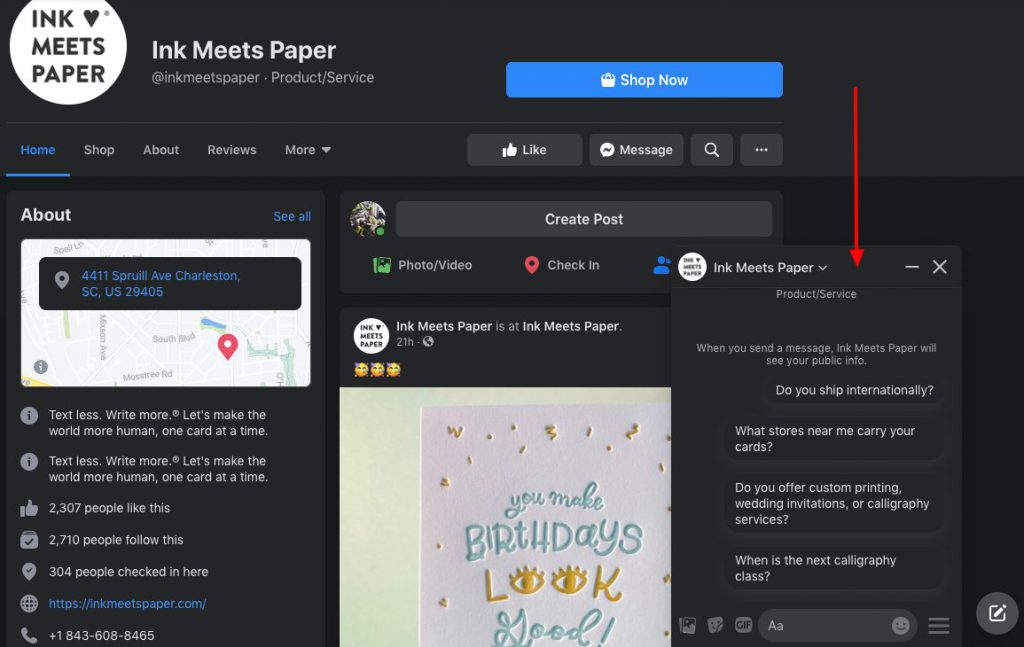
10. Room & Board Drives ROAS With Pinterest Social Commerce
When Pinterest enhanced its social commerce features to expand the number of ways customers can make direct purchases through the platform, furniture brand Room & Board was one of the first retailers to try out the new functionality.
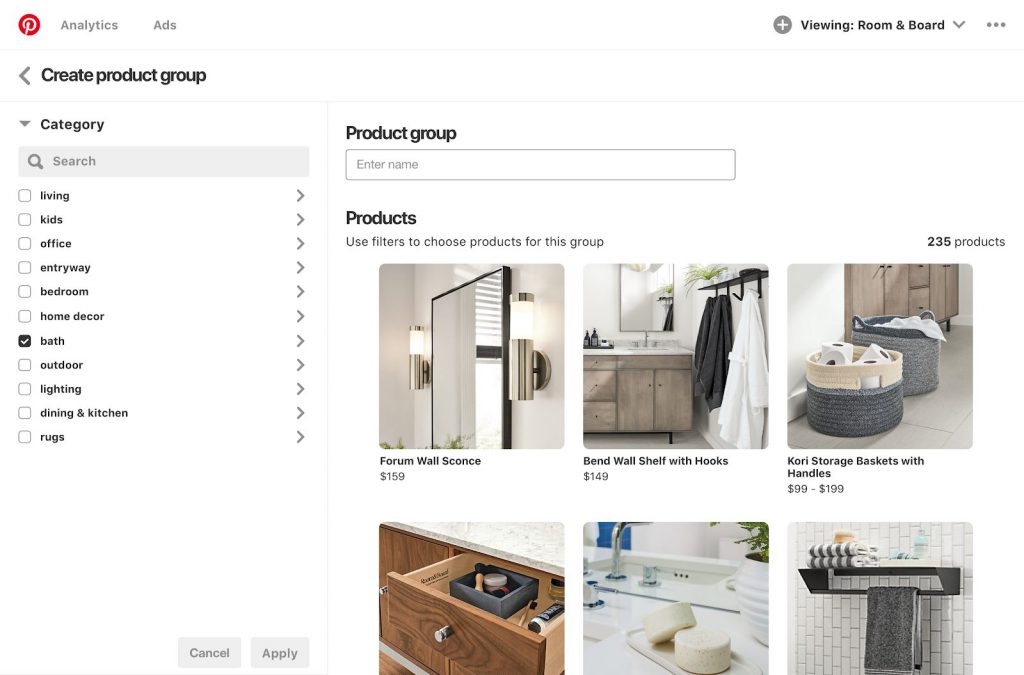
Those new features – which allow consumers to buy through browsable sections, personalized style and home décor recommendations, and shopping searches – helped the brand achieve some impressive results.
Between February and June 2018, Room & Board saw its Promoted Pins campaign generate a 51X return on ad spend (ROAS), while its Shopping Ads campaign achieved a ROAS of 33X.
By the end of the campaign, the brand had surpassed its goals by 127%.
—
Are there any social commerce examples you’ve been impressed with? Share with us in the comments!
Some other articles you might enjoy:
- A Guide to Instagram Shopping for Brands: How to Sell More Products
- Best Practices for Using Social Media Listening to Improve Your Marketing Strategy
- What You Need To Know About Programmatic Advertising For 2019 And Beyond


